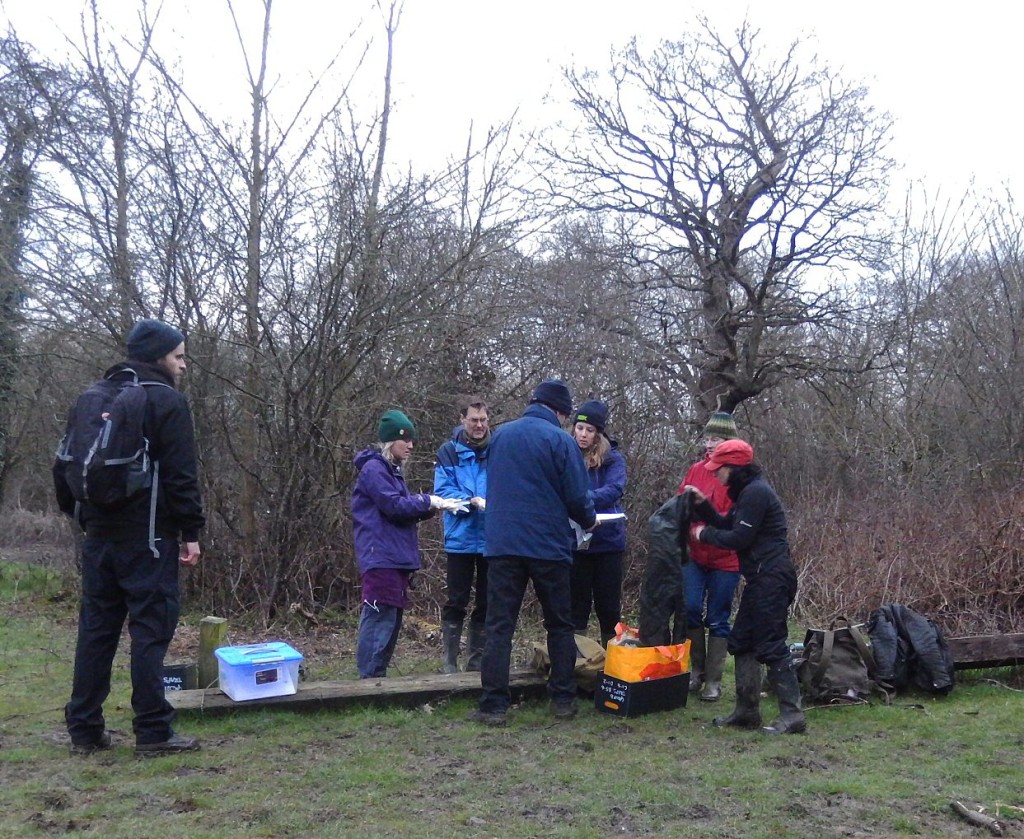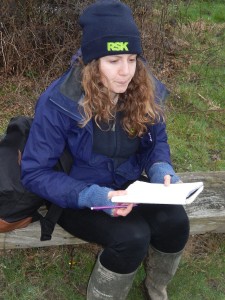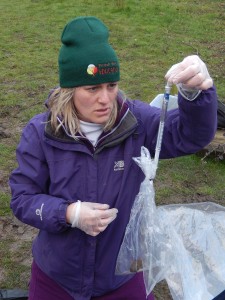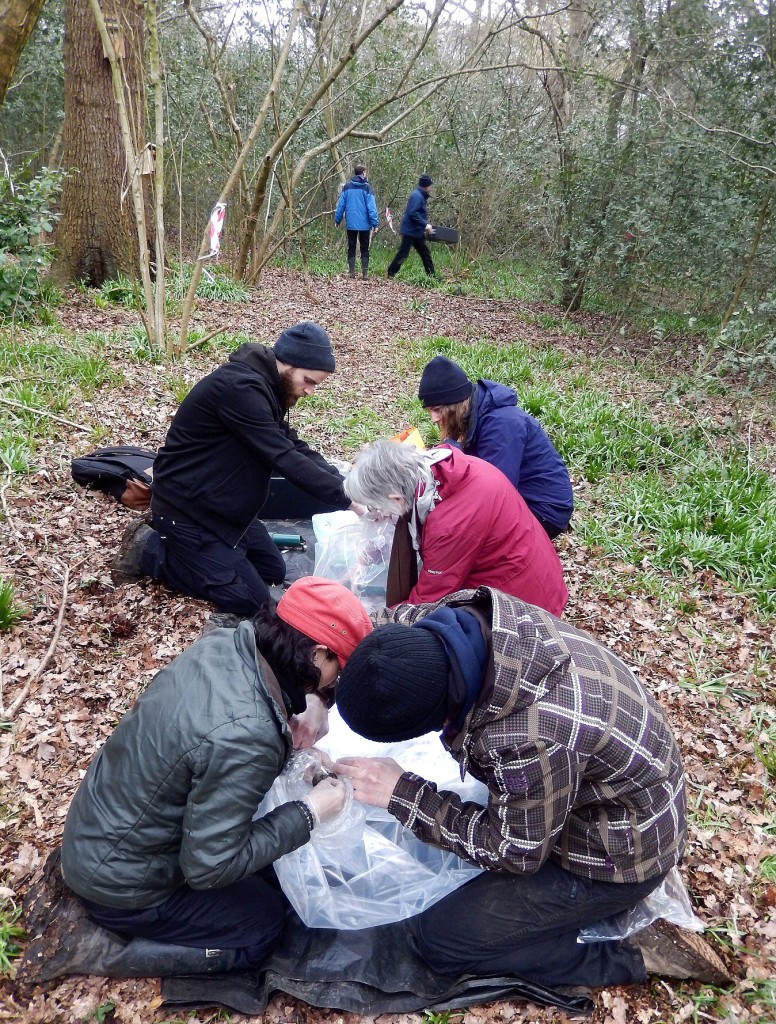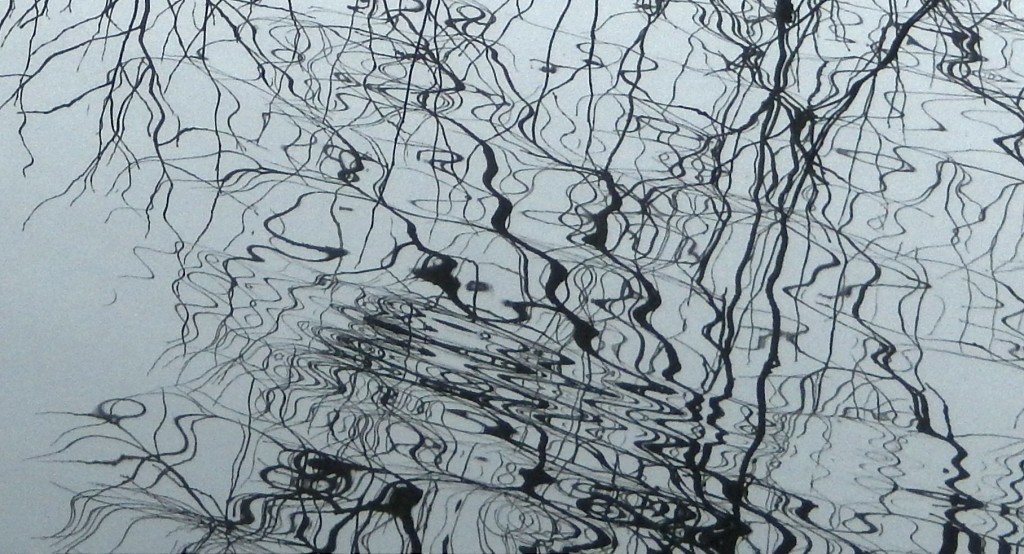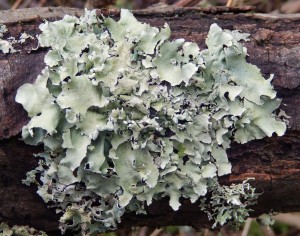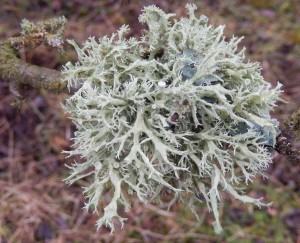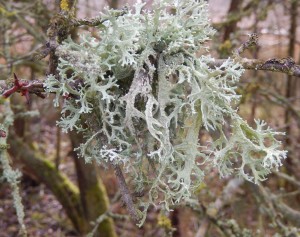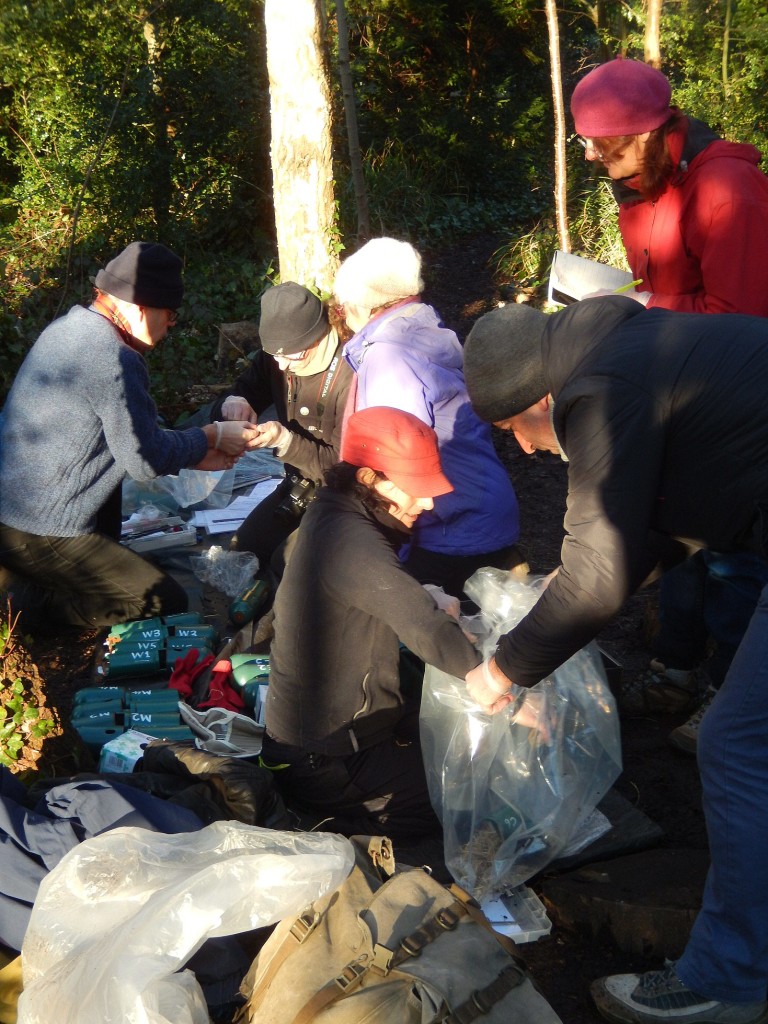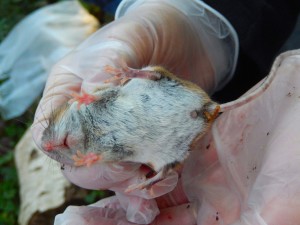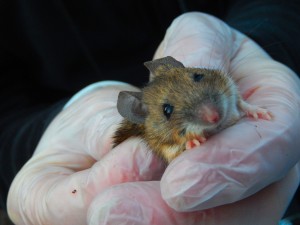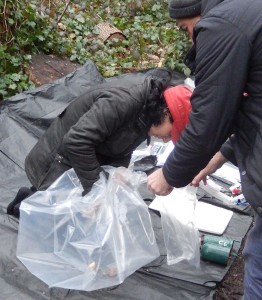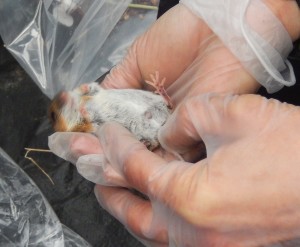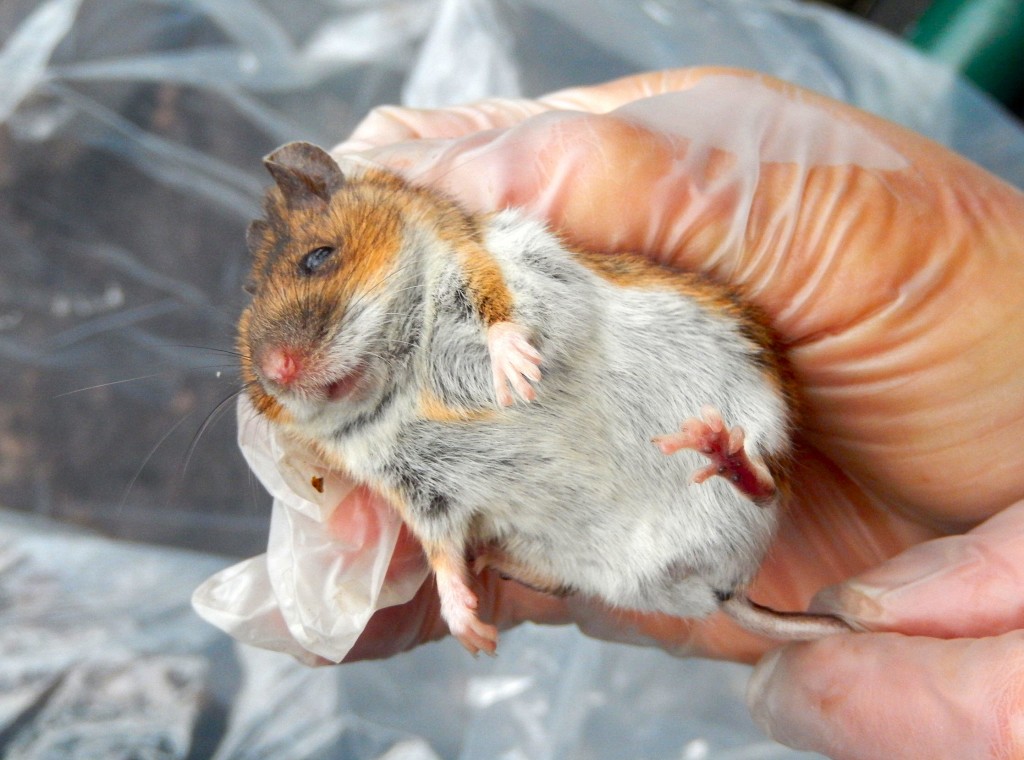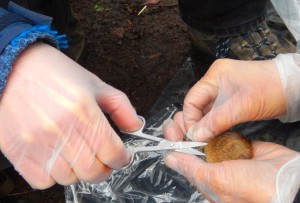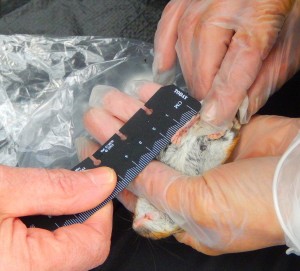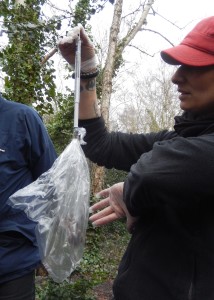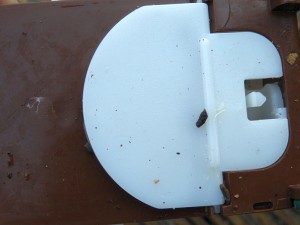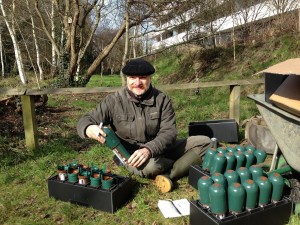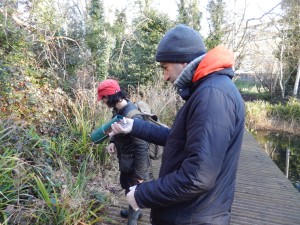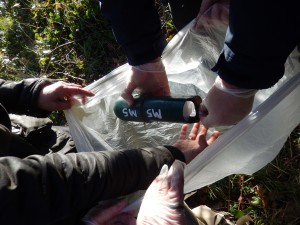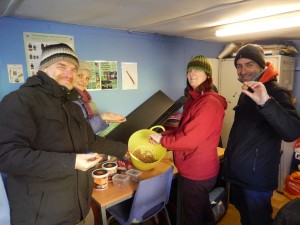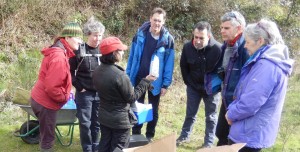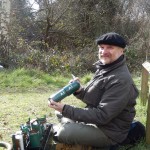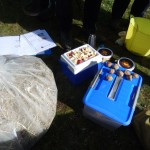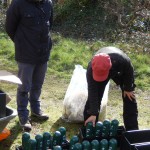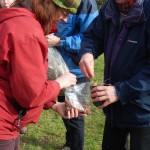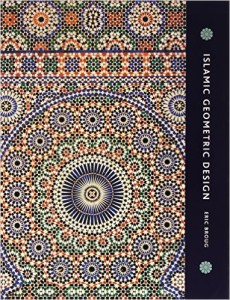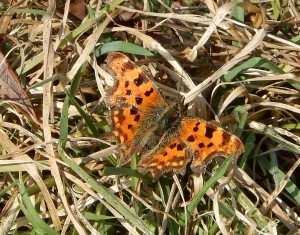
Well, it only takes one still, warm sunny day and suddenly it’s SPRING! Sure enough, the frogs had gone crazy down the mangrove swamp, there was a great heap of spawn in the shallow water, and some excited children (and mothers). A pair of Comma butterflies wheeled and scurried about the sky in a long, intense dogfight, their whirling wings making it clear these were rival males of an orange species, if nothing else!
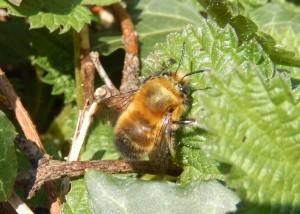
Mike expertly identified the Hairy-Footed Flower Bees around the Alkanets: they came out to warm up in the sun in some numbers. They have never been recorded before here, though we have surely had plenty of them, unrecognized.
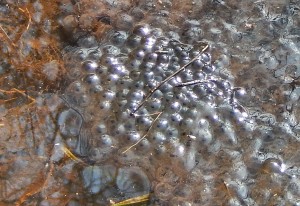

The brilliant yellow of the Broom, and the foamy white of the Blackthorn flowers, announced that spring had sprung in a Botanical way, too.
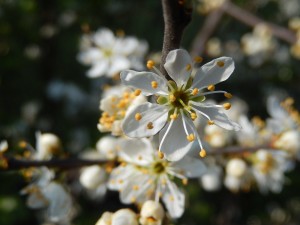
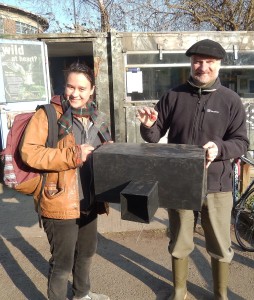
The team spent the afternoon designing and making a prototype Hedgehog house out of Correx sheets left over from the Vole Patrol. We worked out a way to make a house from just two sheets, 54 x 120 cm each: basically one big tube folded 4 times to give 4 sides and an overlap flap, and two half as wide, one for the entrance tube, one for the two ends (joined along the ceiling with flaps on each end of the floor). We fixed it together with just 5 cable ties ingeniously stitched through bradawl holes. A challenge was to get the last stitch in, as the box was then fully closed! The trick was to take out the entrance tube and put a hand inside: the cable tie had to be poked out through a hole that of course we could only see from the outside! The result looks enormous and luxurious, so being Londoners of course we made a lot of jokes about Hammersmith Hedgehog Penthouses and luxury granite kitchens, etc etc. Anyway, we hope the hedgehogs will like them.

